Nor 6
Vessel Name: Nor 6
Barry Royce Allen
Ronald Poole
Antonio (Tony) Romasanta-Bazarra
Lost at Sea; Never Found
26 April 1963
At 12 noon on Tuesday 23 April 1963, the Nor West Whaling Company’s brand-new 53-foot long steel prawn trawler, Nor 6, left Fremantle bound for Carnarvon. On board were the skipper, John (Jack) James Drinan and crew: Barry Allen, also a licensed skipper, Ronald Poole and Tony Romasanta of Perth. Two days later, on Thursday evening, the vessel failed to arrive in Carnarvon. The Company reported the trawler lost the next day and mounted an air and sea search that lasted 18 days.
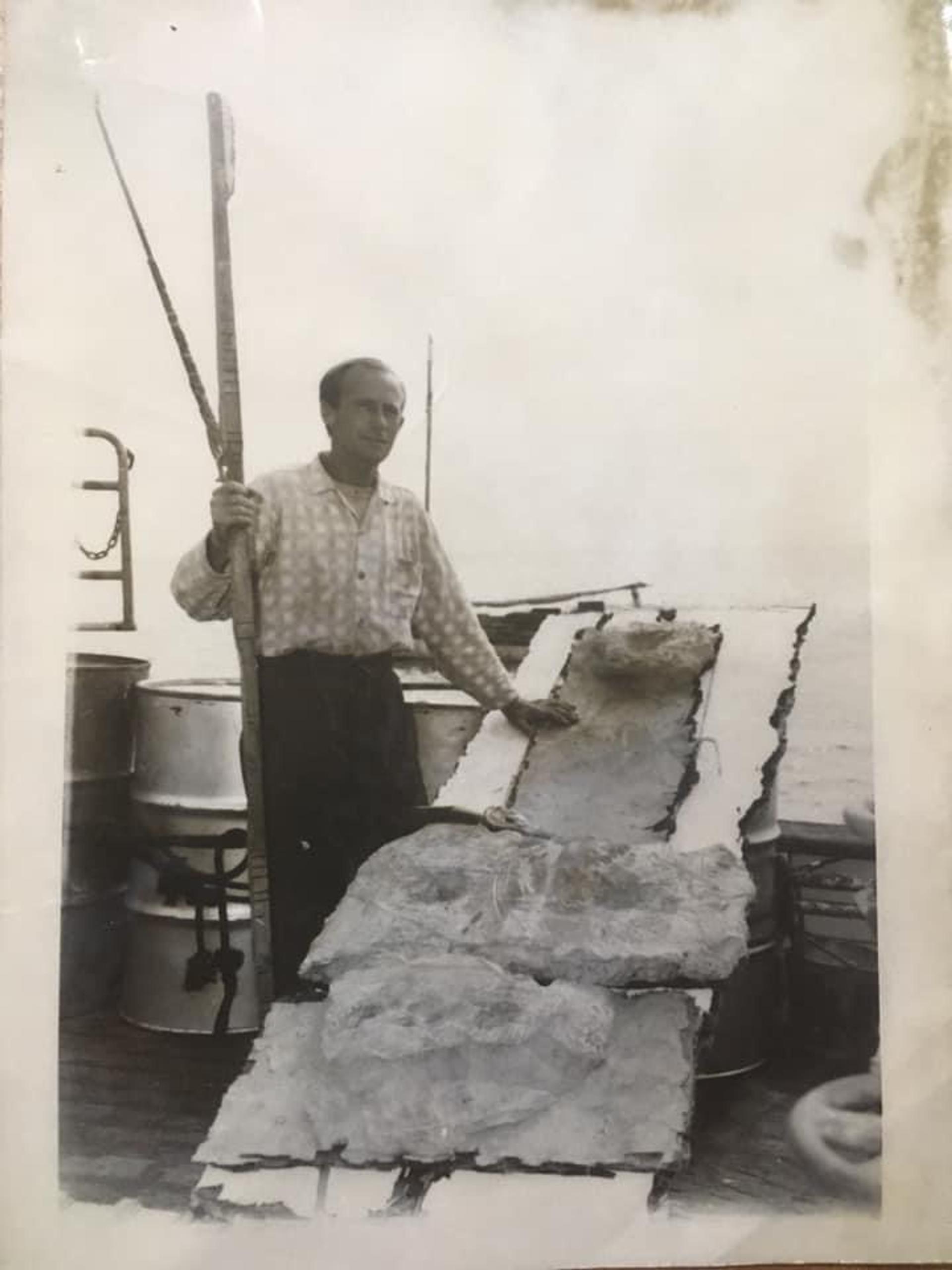
Drinan stands next to his makeshift raft after being rescued
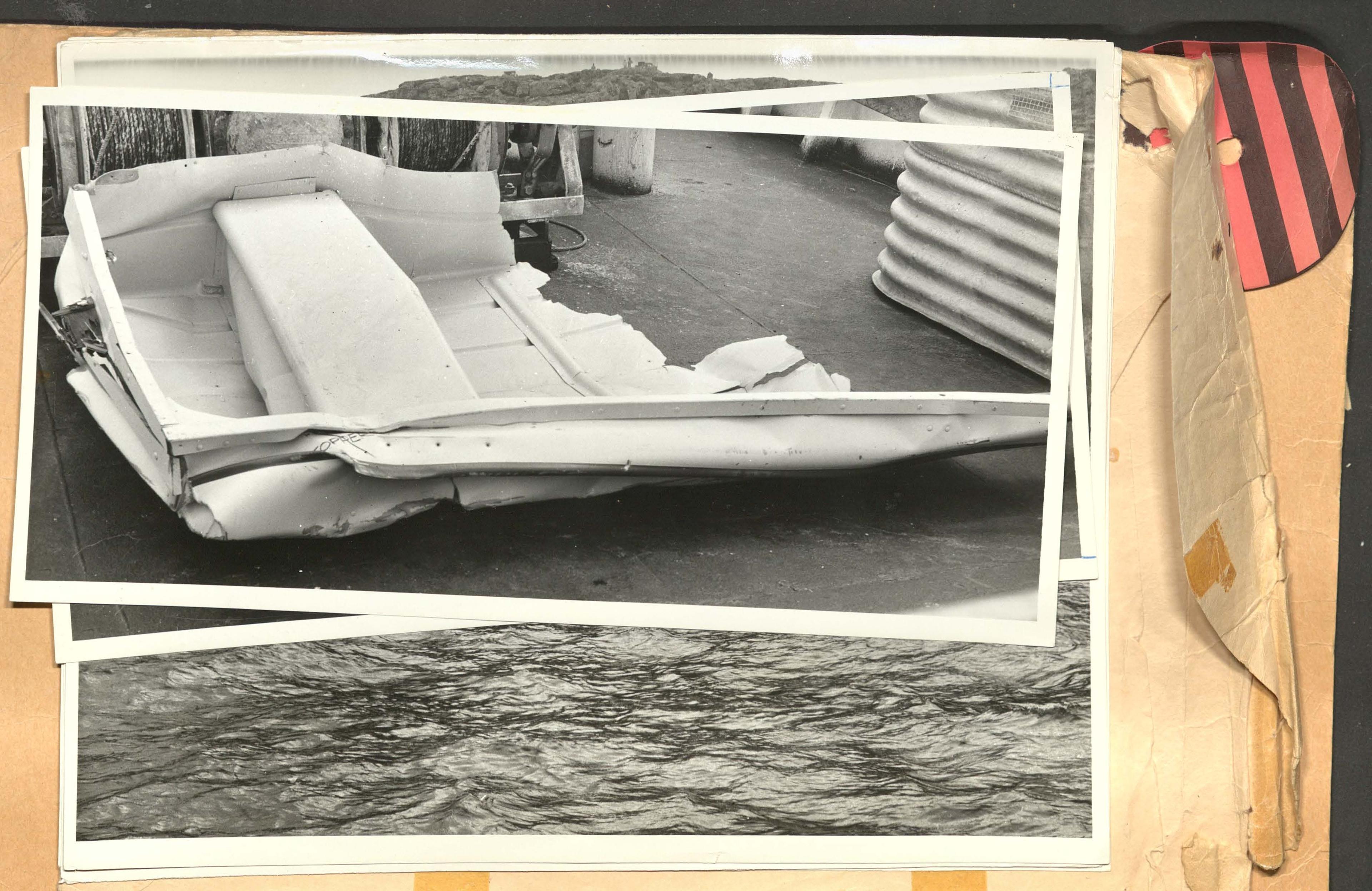
Nor 6 wreckage

The Icebox remains
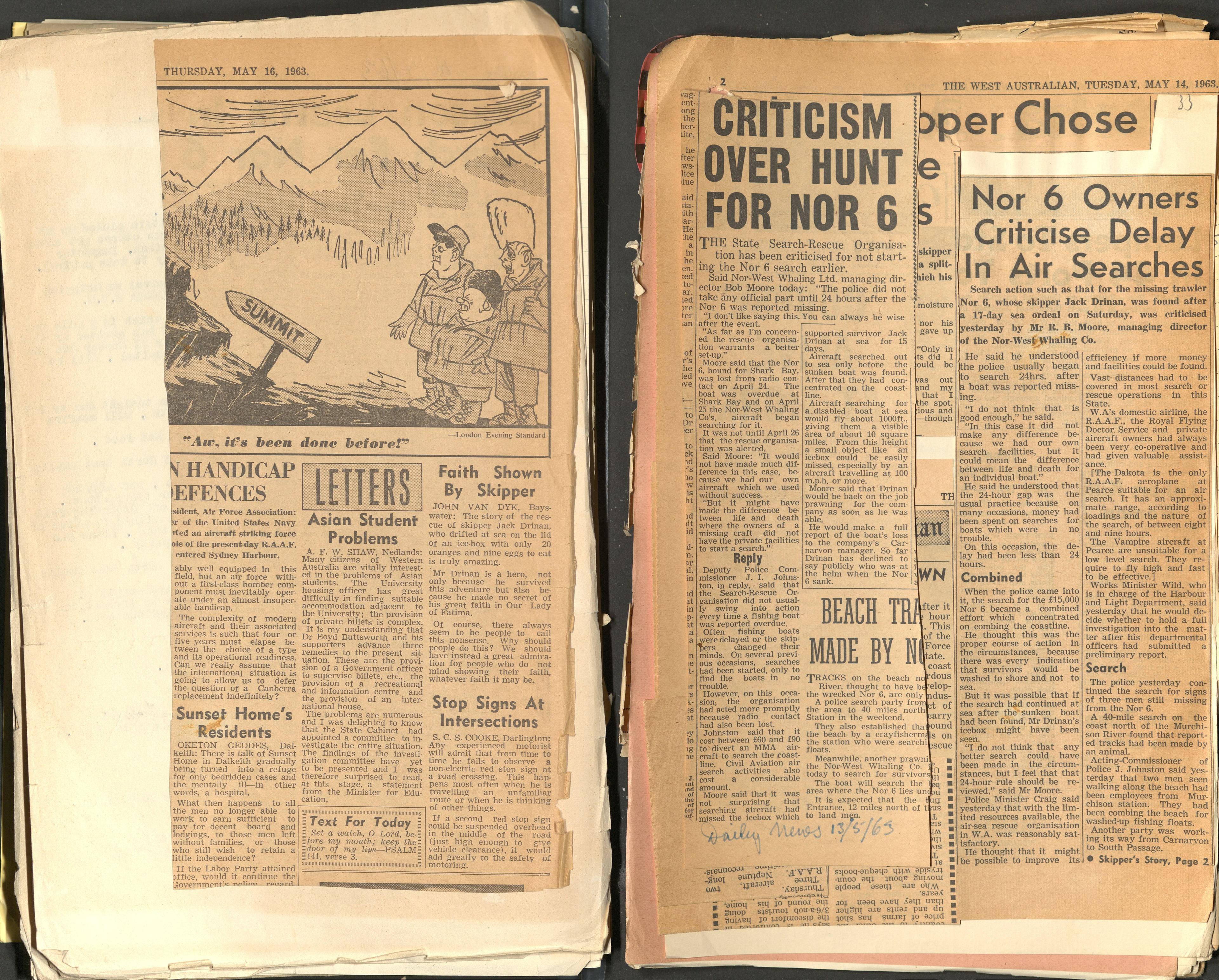
The West 14 May 1963
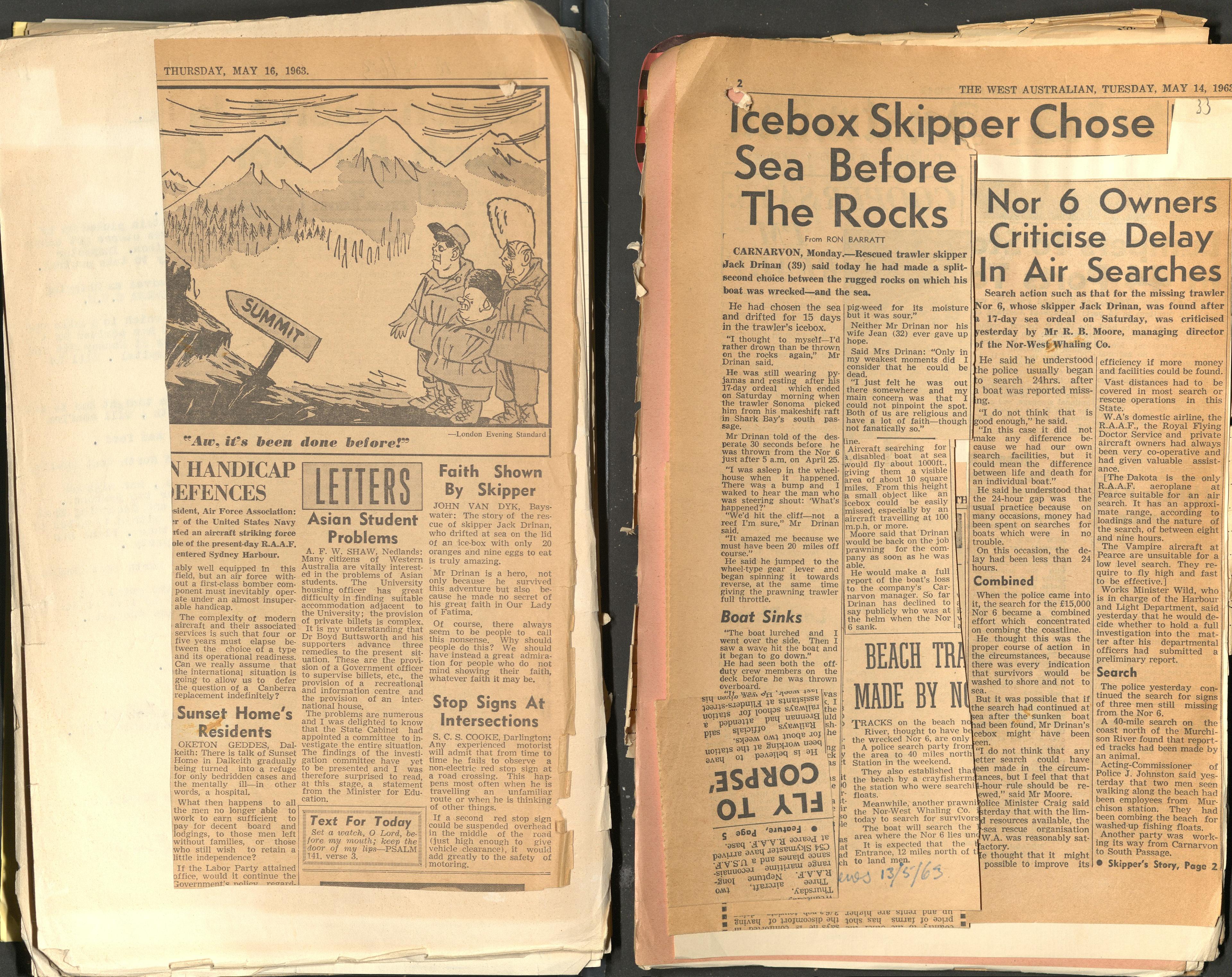
The West 2nd - 14 May 1963

Wreckage location alongside cliffs
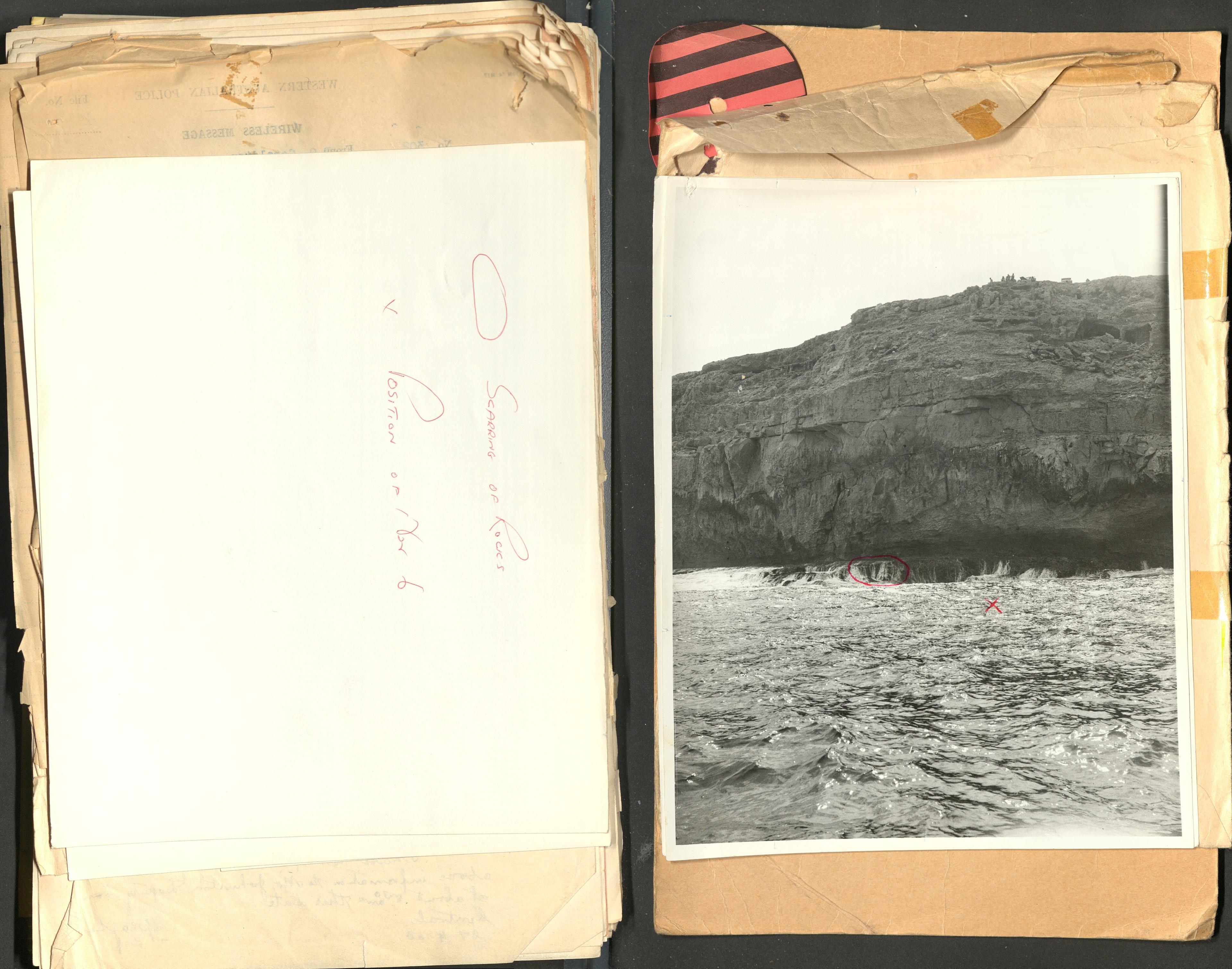
Location of Nor 6
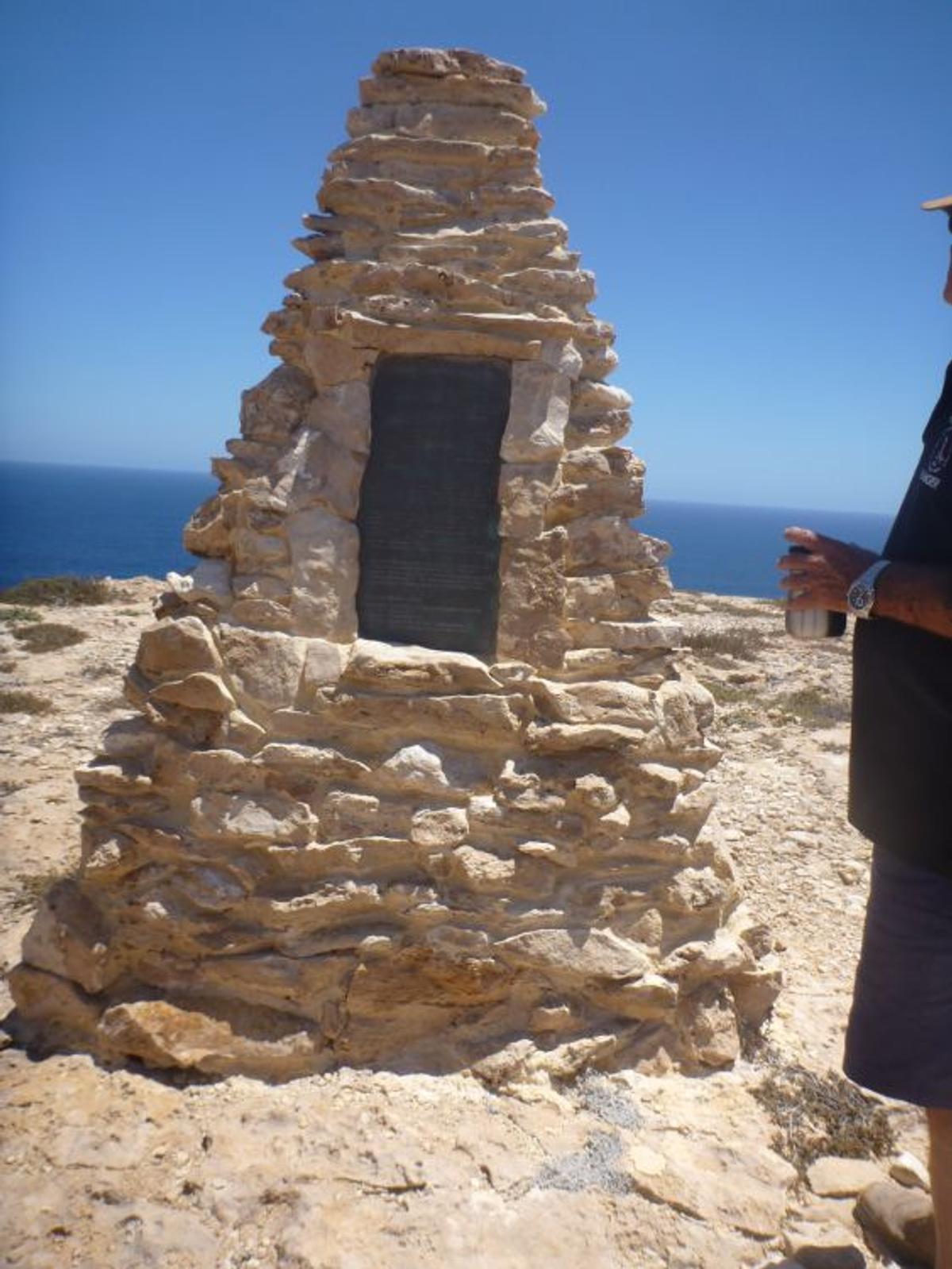
Nor 6 Memorial South of Steep Point
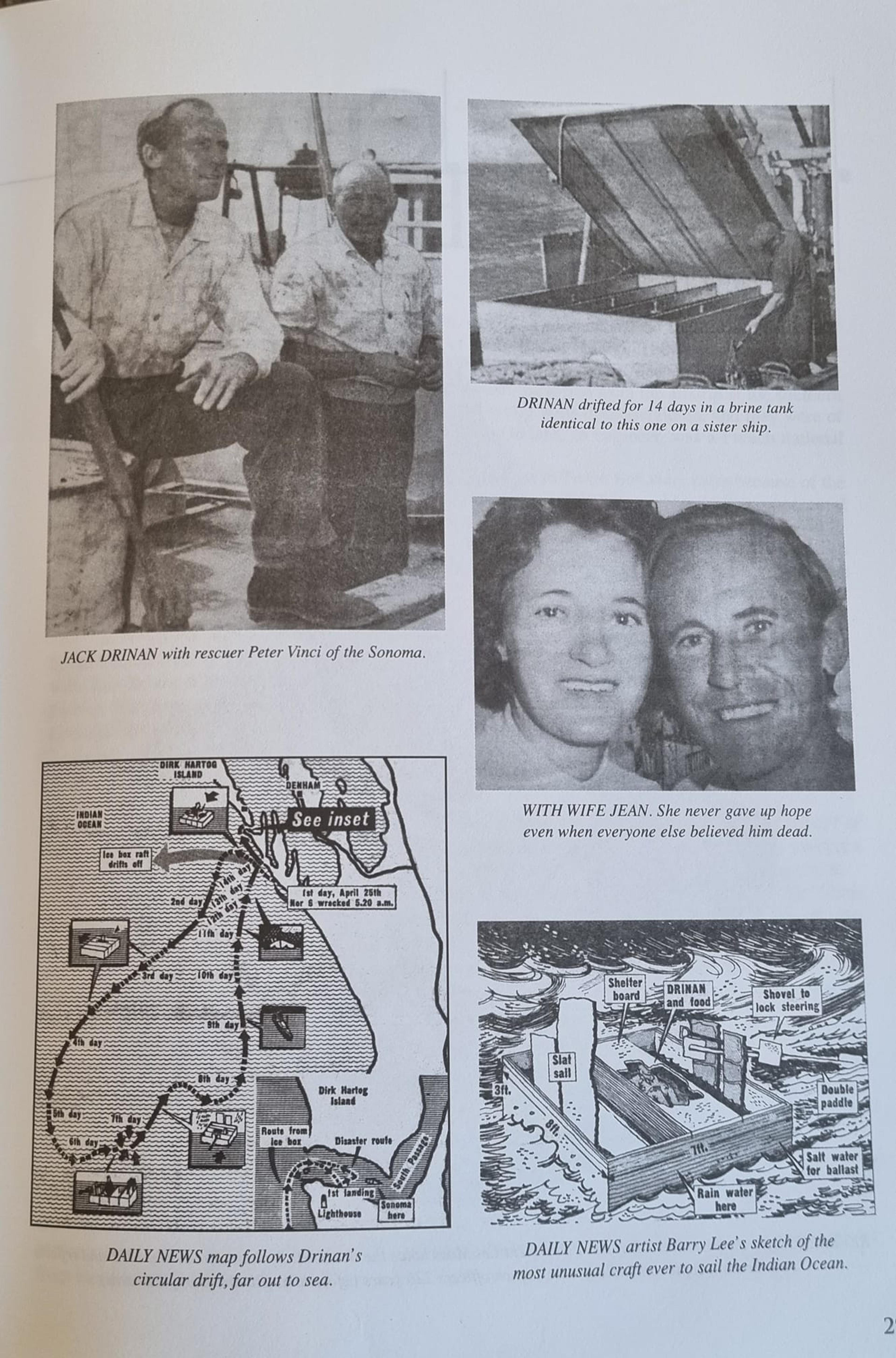
The Daily News Captured the Story
Nor 6 was one of seven vessels operated by Planet Fisheries in the early 1960s. The Nor West Whaling Company, which owned prawning licences around Shark Bay and Carnarvon, was purchased by Frank Pensabene, George Powell, Saverio Pensabene, Peter Vinci, Nic Rotondella and Vincent Pensabene, who were the key partners of the parent company, EMS (Engineer and Marine Services) that also owned Planet Fisheries.
Many years later Vincenzo (Vincent) Pensabene recalled skippering vessels along the same coastline where the Nor 6 was lost. According to Vincent:
“We had to have charts and parallel rules and dividers – you had to carry all this stuff after they started to survey vessels. We used to go to Sharks Bay and Carnarvon and never used any of the navigation items. We only used the charts to learn the depth of the water. Going off watch, I would tell the crew to stay between 24 and 27 fathoms.
After Port Gregory and the Murchison, vessels followed ‘the white line’ where the waves hit the near vertical cliffs [and] they bounce back and create a white line that vessels follow”
The skipper of Nor 6 had radioed the Company when 35 miles north of Geraldton at 4.15 pm on Wednesday 24 April, but the vessel failed to radio the company around 4.00pm the next day, Thursday, and failed to arrive at Carnarvon that evening.
On Friday 26 April, the Nor West Whaling Company reported their vessel missing and various parties were engaged in searching for the missing trawler. The Nor West Whaling Company’s Piper Apache aircraft, that worked with the Company’s trawlers as a spotter plane, was unsuccessful in finding the lost vessel, but the Civil Aviation Department’s aircraft spotted a broken aluminium dinghy floating south of Dirk Hartog Island, Shark Bay, on 28 April 1963.
Nor 3 picked up the smashed dinghy 10 miles south of False Entrance, but there was no evidence that it had been used by the crew. Over the weekend, four aircraft and Nor 2 and Nor 3, along with fishing boats: Nelma and Jupiter of Planet Fisheries, the parent company of Nor West Whaling Company, continued to search for Nor 6 in the Shark Bay region.
On Thursday 30 April 1963, the Piper Apache sighted the sunken vessel in 30 feet of water 9-12 miles south of False Entrance and 30-40 feet from a reef. False Entrance was named because early mariners mistook False Entrance for the South Passage entrance to Shark Bay, between Dirk Hartog Island and Steep Point.
Five days after the Nor 6 was reported lost, a land search party was mounted along the adjacent coast to find any survivors. On 7 May 1963, all official land and sea searches for survivors ceased and no survivors or bodies were found.
Fifteen days after the vessel was lost, the skipper, Jack Drinan was rescued off South Passage lighthouse. He had survived by holding onto a brine tank. The lid of the brine tank and a paddle fashioned from flotsam are preserved in the Western Australian Museum collections. Drinan was the only survivor of the crew of four men.
Drinan told the Carnarvon police that he was asleep in the wheelhouse bunk and Ronald Poole was steering when the Nor 6 hit and then listed to port. Barry Allen was climbing the ladder with Romasanta behind him out of the focs’le into the wheelhouse. The boat suddenly lurched a second time and Drinan was thrown out the door into the sea. He soon spotted the brine tank that had been loose on the open deck and swam to it. He used a strip of metal off the tank to dig into the compartment to access the food stored in the tank. The tank’s lid also attracted dew which he licked off the lid each morning.
The strong winds did not abate until Sunday, followed by three days of calm during which time Drinan built a raft out of the brine tank lid. From Wednesday 1 May to Saturday 4 May, the winds varied and it was overcast with showers and he lost all idea of where he was. On Sunday 5 May he decided to leave the tank and row ashore on the raft-lid. He took the remaining food, two oranges and three eggs with him and paddled for an hour and a half against a strong current before giving up and returning to the brine tank.
The next day it rained and gave him some precious drinking water. After 14 days of floating aimlessly he realised he was back near the cliffs where Nor 6 was sunk but at night he could see the South Passage lighthouse and so he struck out on his raft and after 12 hours landed at 10am on shore near Monkey Rocks, inside Shark Bay. He broke into the lighthouse for shelter and food for one night.
On day 18, after being flung into the sea, at about 8.50am two trawlers, owned by a Mr Vinci and his son, found Drinan paddling towards Dirk Hartog Island. Drinan was picked up by the Sonoma and taken into Monkey Mia the next day and he was flown to Carnarvon by the Nor West Whaling Company’s plane on Sunday 12 May 1963. According to Drinan the Nor 6’s compass had not been adjusted correctly and this was the sole cause of the error in the course that caused Nor 6 to go aground.
Nor 3 was used by the Police divers to recover any bodies from Nor 6. The divers ascertained that Nor 6 was in 35 feet of water, lying parallel to the cliffs, facing north and listing to port, about 150 feet away from where the cliff and water met. Both deck hatches were open. The anchor chain lead from the anchor locker at the bow of the vessel directly to the face of the cliff in a straight taut line and disappeared into white turbulent water which the divers did not follow. There was one anchor lashed down on the main deck and the Inquiry deduced that one anchor may not have been lashed sufficiently and it may have been propelled forward after the vessel hit the ledge.
The mast and boom were broken off and some damage to the left rear corner of the wheelhouse was noticed. The port side of the vessel from the bow back to the front of the wheelhouse, under the gunnel, was stoved in and holed. There was a hole about a foot in diameter in the keel near the heel of the stem and a similar hole on the starboard side. The vessel was resting on rocks and some of the damage may have occurred after sinking. Adjacent the vessel was a submerged ledge which had been freshly scarred and further gouging about 15 feet above the ledge where the wheelhouse may have hit the ledge.
Because the damage was sustained to the port side of the vessel, it suggested Nor 6 was travelling south rather than north. The Police report suggested the vessel may have been travelling south or east directly towards the cliff when it broached to the left upon contact, bringing the port bow into contact with the cliff.
From 29 July to 2 August 1963 a Court of Marine Inquiry was held into the loss of the Nor 6. It established that the vessel was well constructed with first class workmanship and materials. Nor 6 complied with survey regulations and carried all the appropriate navigation gear including a depth sounder and two-way radio but that it collided with a reef at around 5.20am on 25 April 1963 some 9 miles south of False Entrance.
According to Drinan he was on watch from 1am to 3am on 25 April and he had set a course of 340 degrees compass (which he later denied) which set the vessel on collision with land “slightly north of where she actually founded” . Drinan was relieved by Barry Allen and around 5am Allen was relieved by Ronald Poole who must have been at the helm when the vessel struck. Police skin divers found that the vessel was damaged on the port side where it hit rocks and with a hole at the bottom of the stem and another hole on the starboard side.
The Court found that Drinan had not taken sufficient bearings from the boat to prominent landmarks, except for one taken at Shoal Point lighthouse. Furthermore, there were no adequate checks on the speed or set and drift of the vessel. The Court found that Drinan had been incompetent and had failed in his duty relating to the navigation and management of the ship under his charge. Drinan was charged with incompetency and misconduct and his Skipper’s certificate was suspended for 12 months.
On a remote part of the coast on the cliffs south of Steep Point, adjacent to where the Nor 6 foundered, and Barry Allen, Ronald Poole and Tony Romasanta lost their lives at sea, a monument was built by Paul and Pam Dickenson and Hugh Edwards. The freezer lid and the makeshift paddle that saved Jack Drinan’s life is held in the Western Australian Museum’s heritage watercraft collection.
